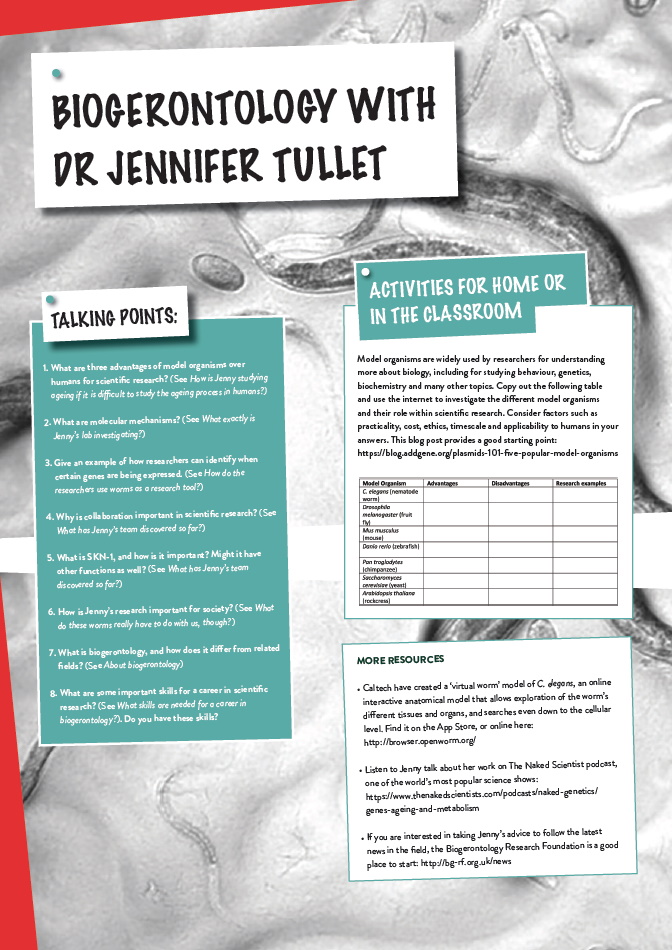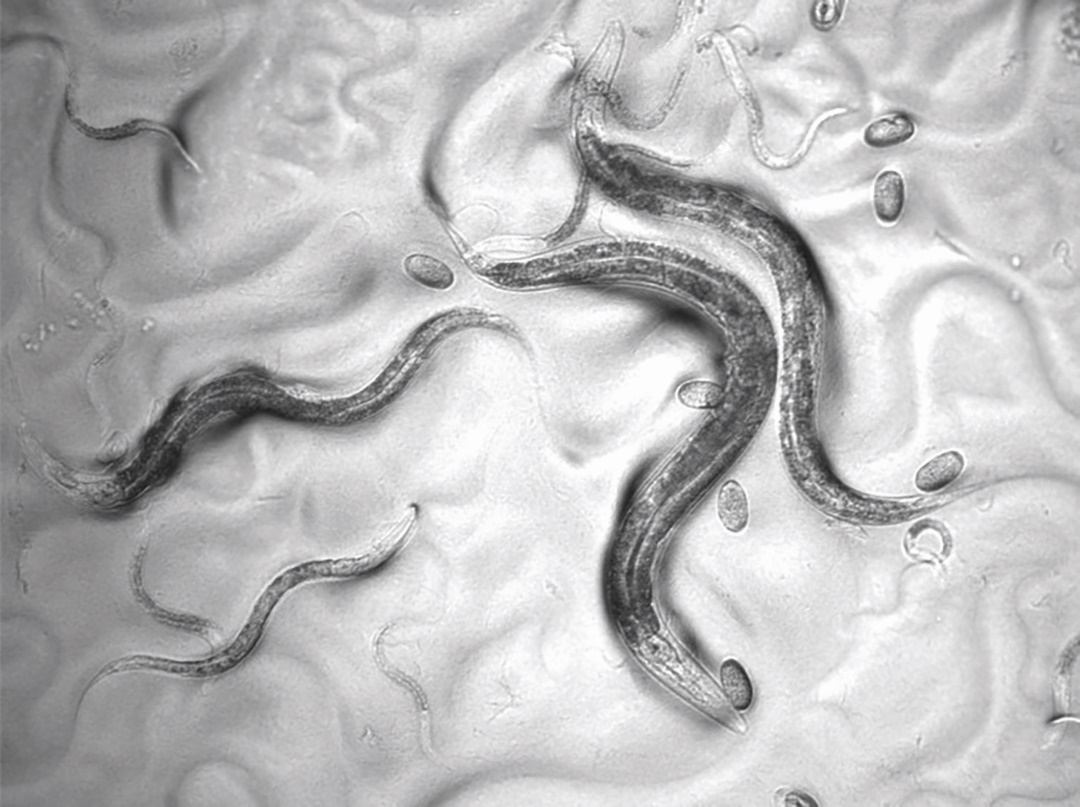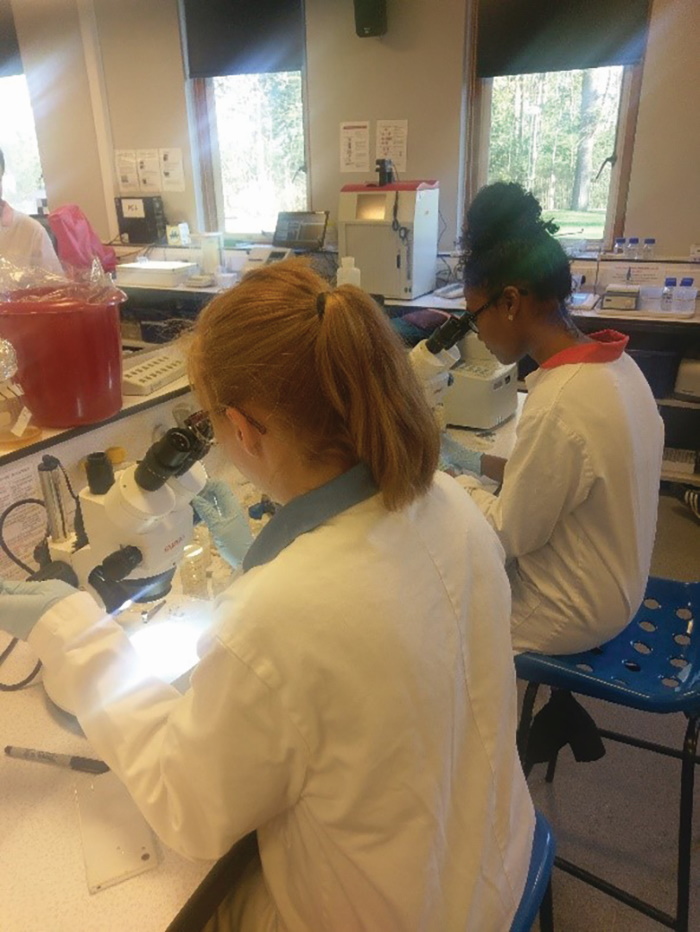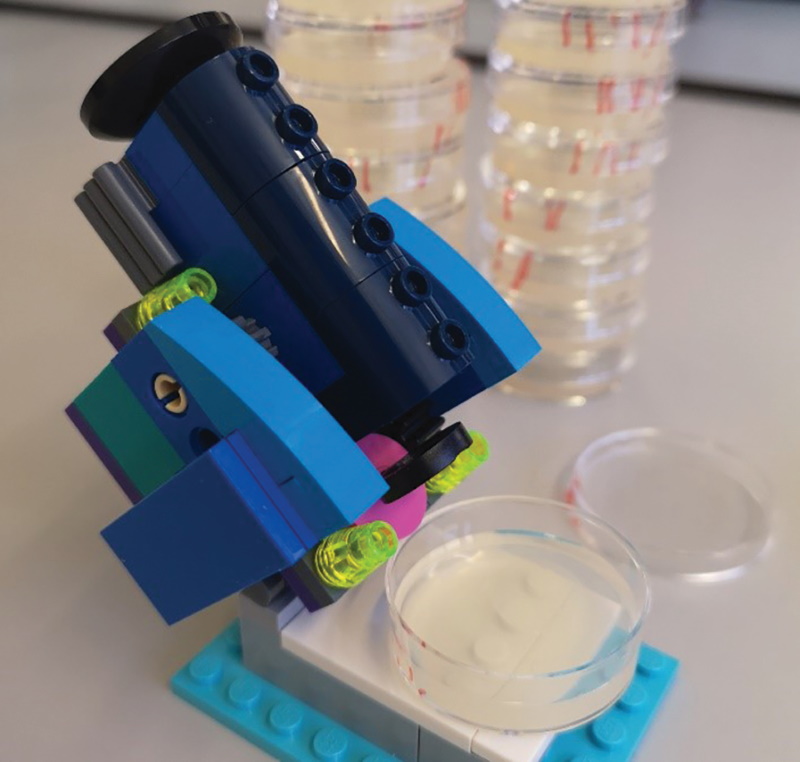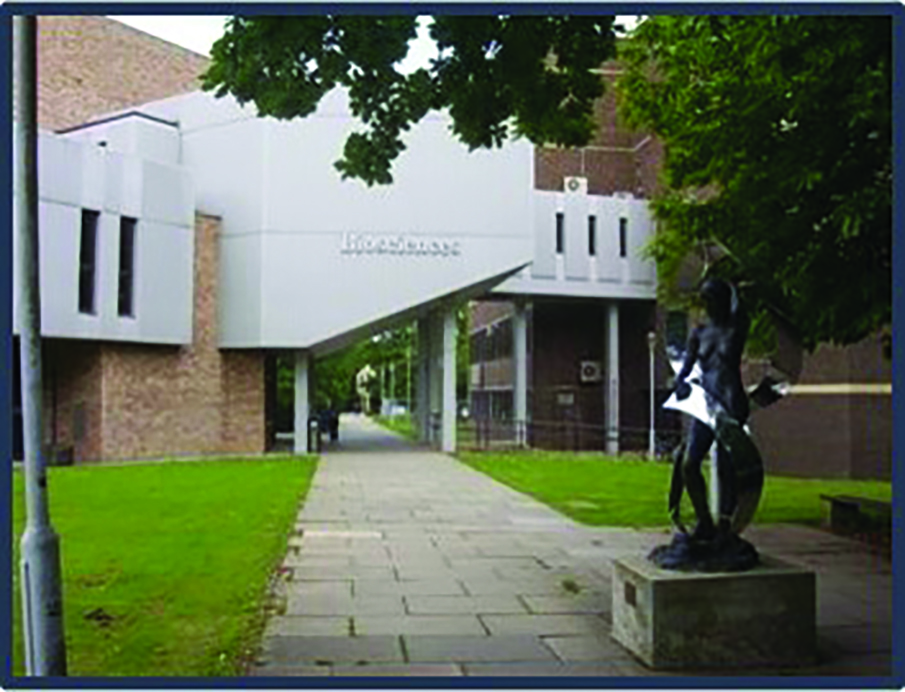What can worms tell us about ageing in humans?
A nematode worm called C. Elegans has a lifespan of about three weeks, so what can it tell us about how and why we age? Biogerontologist Dr Jennifer Tullet, based at the University of Kent, is investigating lifespan and the ageing process using these worms. Their similarity to mammals means that these studies can also be applied to humans
The concept of ageing has preoccupied minds for centuries. For example, Qin Shi Huang, the first emperor of China (221-206 BC), is claimed to have consumed cinnabar – a deadly mercury sulphide – in his quest for immortality. While the cause of his death might be obvious, the question as to why we cannot live forever remains. And if we cannot live forever, why not at least for a couple of hundred years? Why do our pet dogs age so much faster than us and certain pet tortoises so much slower? Why can some people stay healthy well into old age, whilst others suffer from dementia or cancer?
Dr Jennifer Tullet is a senior lecturer in biogerontology within the University of Kent’s School of Biosciences. Biogerontology is the study of the biological process of ageing and Jenny hopes that her research will answer some key questions about how and why we age.
HOW IS JENNY STUDYING AGEING IF IT IS DIFFICULT TO STUDY THE AGEING PROCESS IN HUMANS?
Researchers in Jenny’s lab are investigating the ageing process using a millimetre-long nematode worm called Caenorhabditis elegans, or C. elegans for short. “This worm is naturally found in compost and garden soils,” says Jenny. In the lab, however, it is a ‘model organism’, a term given to non-human species that are studied by scientists to find answers about biological processes.
The results of these studies can be applied to a range of species, including humans, as Jenny explains: “We share about 70% of our DNA with C. elegans. Many of their genes, cell signalling pathways and the biology that they control are the same. This means that we can use C. elegans to explore topics such as neuroscience, behaviour, development and my own field, ageing biology.”
Scientists have developed clever ways of altering the worms’ genome, allowing them to examine the effects of certain genes on particular functions. “You can also measure several physiological characteristics of ageing in worms that can be applied to humans, such as muscle strength, neurodegeneration, changes to metabolism and reproduction,” says Jenny.
WHAT EXACTLY IS JENNY’S LAB INVESTIGATING?
“We don’t just want to find out what makes people live for a long time,” says Jenny. “What we are really investigating is what makes people stay healthy for longer.” Organisms are made up of different types of cell, and each cell type has a unique function, as Jenny goes on to explain: “To carry out its role, a cell needs not only the genetic blueprint provided by DNA, but also a whole range of tools that tell it which genes to switch on and off at any given time”. It is these tools – the molecular mechanisms – that Jenny and her team are researching.
HOW DO THE RESEARCHERS USE WORMS AS A RESEARCH TOOL?
“Because C. elegans only live for about three weeks in the lab, we can easily follow and measure their entire lifespan,” says Jenny. “For lifespan experiments, we take ~100 worms at the start of their adult lives, place them on agar plates with plenty of food and monitor them over the course of their lives.”
Using C. elegans, scientists in Jenny’s lab can perform a wide range of specific experiments. For instance, they can measure how a worm’s movement changes as it ages, or track its fat content or the number of offspring it produces – the same characteristics that change as humans age. “We have also been doing some very interesting behaviour experiments,” says Jenny. “We are testing the roles of certain genes in sensing food, eating and determining a worm’s hunger and satiety (feeling full).”
To pinpoint which genes lead to changes in movement, fat content or behaviour, for example, the researchers remove or alter the function of certain genes from the worm’s genome to find out what they do. “We can also insert the gene for fluorescent proteins into a worm’s DNA next to any existing genes that we are interested in,” says Jenny. “If the gene of interest is expressed, the fluorescent protein is too. The cell where this takes place will literally ‘light up’ under the microscope.” The scientists use these visual clues to identify where in the worm’s body the gene is expressed, and at what stage it is in its lifetime.
WHAT HAS JENNY’S TEAM DISCOVERED SO FAR?
“Science is hardly ever about eureka moments. It is normally small discoveries that build upon how we view biology as a whole,” says Jenny. “My team and I have made plenty of these little discoveries, but perhaps the most significant in recent years is the identification of a new protein involved in controlling lifespan called RNA polymerase III.” Jenny’s team collaborated with labs in London and the Netherlands to study this protein in worms, yeast and flies. The next stage is to see whether these results from model organisms apply to humans.
Jenny is also investigating another protein called SKN-1, which has led to some surprising results. “Earlier in my career I studied the role of SKN-1 as an important longevity gene, but our current research suggests it also has an exciting role in food-related behaviour. There is never a dull moment!” she says.
WHAT DO THESE WORMS REALLY HAVE TO DO WITH US, THOUGH?
Even though worms are completely different to humans, there are still a great number of similarities in how humans and worms function. By uncovering the processes that control ageing and age-related disease in these worms, biogerontologists like Jenny can increase our understanding of ageing and age-related disease in people. And if you are interested in helping people live healthier lives in their old age, then biogerontology could be the career path for you. As Jenny says, “Understanding more about how the ageing process happens means that we might be able to alleviate some of the discomfort and illness associated with it.”
 DR JENNIFER TULLET
DR JENNIFER TULLET
Senior Lecturer in Biogerontology
School of Biosciences
University of Kent, UK
FIELD OF RESEARCH: Biogerontology
RESEARCH PROJECT: Scientists in Jenny’s lab are investigating the molecular mechanisms underlying the ageing process, using the model organism C. elegans.
FUNDERS: Biotechnology and Biological Sciences Research Council (BBSRC), The Royal Society
ABOUT BIOGERONTOLOGY
Biogerontology is the study of the biology behind the ageing processes. It is distinct from gerontology (which studies the impacts of ageing on individuals and society, rather than the root biological causes of ageing), and from geriatrics, which specialises in healthcare measures for the elderly. Naturally, there is overlap between the three specialisms. For instance, understanding the biological processes behind ageing can help inform the treatment of age-associated diseases.
WHAT SKILLS ARE NEEDED FOR A CAREER IN BIOGERONTOLOGY?
According to senescence.info, a website about ageing research, biology and genetics are a good step into biogerontology, but notes that biologists and geneticists are not the only ones studying ageing: physicists, physicians, engineers, computer scientists, mathematicians are also known to be working in this area. Ultimately, as Jenny says, “Any career in scientific research requires the ability to always be learning and developing transferable skills. I am learning new things all the time. Like any field of science, it is impossible to know everything, and new developments can happen very fast!”
Reference
https://doi.org/10.33424/FUTURUM41
“The image shows C. elegans growing on an agar plate. The biggest worm in the picture is an adult and is about 1mm long. We have to use microscopes to look at them because they are so small. The worms are also transparent, so if you look carefully you can see their eggs inside and the different cells joining together.”
Dr Jennifer Tullet
“These undergraduate students are using worms in the lab. I love running practical sessions and supervising project students. They view the worms down the microscope and use pieces of wire to move them around. It’s tricky at first but everyone gets the hang of it in the end.”
Dr Jennifer Tullet
“My son gave me a mini-LEGO microscope for Mother’s day last year – we set it up so we could use it to look at the worms.”
Dr Jennifer Tullet
“Here is the biosciences building at the University of Kent. My lab is in the two windows on the far left.”
Dr Jennifer Tullet
The concept of ageing has preoccupied minds for centuries. For example, Qin Shi Huang, the first emperor of China (221-206 BC), is claimed to have consumed cinnabar – a deadly mercury sulphide – in his quest for immortality. While the cause of his death might be obvious, the question as to why we cannot live forever remains. And if we cannot live forever, why not at least for a couple of hundred years? Why do our pet dogs age so much faster than us and certain pet tortoises so much slower? Why can some people stay healthy well into old age, whilst others suffer from dementia or cancer?
Dr Jennifer Tullet is a senior lecturer in biogerontology within the University of Kent’s School of Biosciences. Biogerontology is the study of the biological process of ageing and Jenny hopes that her research will answer some key questions about how and why we age.
HOW IS JENNY STUDYING AGEING IF IT IS DIFFICULT TO STUDY THE AGEING PROCESS IN HUMANS?
Researchers in Jenny’s lab are investigating the ageing process using a millimetre-long nematode worm called Caenorhabditis elegans, or C. elegans for short. “This worm is naturally
found in compost and garden soils,” says Jenny. In the lab, however, it is a ‘model organism’, a term given to non-human species that are studied by scientists to find answers about biological processes.
The results of these studies can be applied to a range of species, including humans, as Jenny explains: “We share about 70% of our DNA with C. elegans. Many of their genes, cell signalling pathways and the biology that they control are the same. This means that we can use C. elegans to explore topics such as neuroscience, behaviour, development and my own field, ageing biology.”
Scientists have developed clever ways of altering the worms’ genome, allowing them to examine the effects of certain genes on particular functions. “You can also measure several physiological characteristics of ageing in worms that can be applied to humans, such as muscle strength, neurodegeneration, changes to metabolism and reproduction,” says Jenny.
WHAT EXACTLY IS JENNY’S LAB INVESTIGATING?
“We don’t just want to find out what makes people live for a long time,” says Jenny. “What we are really investigating is what makes people stay healthy for longer.” Organisms are made up of different types of cell, and each cell type has a unique function, as Jenny goes on to explain: “To carry out its role, a cell needs not only the genetic blueprint provided by DNA, but also a whole range of tools that tell it which genes to switch on and off at any given time”. It is these tools – the molecular mechanisms – that Jenny and her team are researching.
HOW DO THE RESEARCHERS USE WORMS AS A RESEARCH TOOL?
“Because C. elegans only live for about three weeks in the lab, we can easily follow and measure their entire lifespan,” says Jenny. “For lifespan experiments, we take ~100 worms at the start of their adult lives, place them on agar plates with plenty of food and monitor them over the course of their lives.”
Using C. elegans, scientists in Jenny’s lab can perform a wide range of specific experiments. For instance, they can measure how a worm’s movement changes as it ages, or track its fat content or the number of offspring it produces – the same characteristics that change as humans age. “We have also been doing some very interesting behaviour experiments,” says Jenny. “We are testing the roles of certain genes in sensing food, eating and determining a worm’s hunger and satiety (feeling full).”
To pinpoint which genes lead to changes in movement, fat content or behaviour, for example, the researchers remove or alter the function of certain genes from the worm’s genome to find out what they do. “We can also insert the gene for fluorescent proteins into a worm’s DNA next to any existing genes that we are interested in,” says Jenny. “If the gene of interest is expressed, the fluorescent protein is too. The cell where this takes place will literally ‘light up’ under the microscope.” The scientists use these visual clues to identify where in the worm’s body the gene is expressed, and at what stage it is in its lifetime.
WHAT HAS JENNY’S TEAM DISCOVERED SO FAR?
“Science is hardly ever about eureka moments. It is normally small discoveries that build upon how we view biology as a whole,” says Jenny. “My team and I have made plenty of these little discoveries, but perhaps the most significant in recent years is the identification of a new protein involved in controlling lifespan called RNA polymerase III.” Jenny’s team collaborated with labs in London and the Netherlands to study this protein in worms, yeast and flies. The next stage is to see whether these results from model organisms apply to humans.
Jenny is also investigating another protein called SKN-1, which has led to some surprising results. “Earlier in my career I studied the role of SKN-1 as an important longevity gene, but our current research suggests it also has an exciting role in food-related behaviour. There is never a dull moment!” she says.
WHAT DO THESE WORMS REALLY HAVE TO DO WITH US, THOUGH?
Even though worms are completely different to humans, there are still a great number of similarities in how humans and worms function. By uncovering the processes that control ageing and age-related disease in these worms, biogerontologists like Jenny can increase our understanding of ageing and age-related disease in people. And if you are interested in helping people live healthier lives in their old age, then biogerontology could be the career path for you. As Jenny says, “Understanding more about how the ageing process happens means that we might be able to alleviate some of the discomfort and illness associated with it.”

DR JENNIFER TULLET
Senior Lecturer in Biogerontology
School of Biosciences
University of Kent, UK
FIELD OF RESEARCH: Biogerontology
RESEARCH PROJECT: Scientists in Jenny’s lab are investigating the molecular mechanisms underlying the ageing process, using the model organism C. elegans.
FUNDERS: Biotechnology and Biological Sciences Research Council (BBSRC), The Royal Society
ABOUT BIOGERONTOLOGY
Biogerontology is the study of the biology behind the ageing processes. It is distinct from gerontology (which studies the impacts of ageing on individuals and society, rather than the root biological causes of ageing), and from geriatrics, which specialises in healthcare measures for the elderly. Naturally, there is overlap between the three specialisms. For instance, understanding the biological processes behind ageing can help inform the treatment of age-associated diseases.
WHAT SKILLS ARE NEEDED FOR A CAREER IN BIOGERONTOLOGY?
According to senescence.info, a website about ageing research, biology and genetics are a good step into biogerontology, but notes that biologists and geneticists are not the only ones studying ageing: physicists, physicians, engineers, computer scientists, mathematicians are also known to be working in this area. Ultimately, as Jenny says, “Any career in scientific research requires the ability to always be learning and developing transferable skills. I am learning new things all the time. Like any field of science, it is impossible to know everything, and new developments can happen very fast!”
IS A CAREER IN BIOGERONTOLOGY RECOMMENDED?
“I would recommend any career in scientific research,” says Jenny. “It offers great opportunities for lifelong learning, alongside a good amount of flexibility and travel. My favourite aspect of the job is all the great people I have met along the way. The people are the reason I keep at this career, even in tough times.”
• Several UK university courses offer optional modules related to ageing. Jenny co-ordinates a module on the biology of ageing at the University of Kent. Elsewhere, University College London offers a module on the biology of ageing, and the Universities of Warwick and Liverpool offer modules on the psychology of ageing.
• Undergraduate degrees in biology, biochemistry, biomedicine or genetics are generally best suited to a later in biogerontology. Other possibilities include degrees in chemistry or medicine.
• A background in biogerontology can lead to several possible career paths. This includes research-based, such as Jenny’s lab, but there are also opportunities with pharmaceutical companies and even independent start-ups.
ASK DR JENNIFER TULLET
DID YOU ALWAYS KNOW A SCIENTIFIC CAREER WAS FOR YOU?
No, absolutely not! When I was younger, a whole range of careers appealed to me. I considered training as a vet, optometrist, teacher or occupational therapist. Otherwise, I remember receiving a chemistry set for Christmas one year and my dad helping me to do the experiments and write up the results in a little notebook. This might have marked the beginning of my interest in science.
It was when I was about 17 that my thoughts started to come together, and I picked A-levels that would lead to some sort of scientific career. I also decided I wanted to be a mum, and my husband and I now have two children. The flexibility of the science job helps with juggling family and work.
WHAT DID YOU STUDY AT SCHOOL?
My GCSEs included the three sciences, maths, English, computing and home economics. I really enjoyed biology so decided to take it at A level, alongside chemistry and physics (although I was never very good at physics). I had a fantastic biology teacher who encouraged me to take it further. I don’t think I knew any biologists at the time, so my decisions were based on what I enjoyed and what I was best at.
I also considered taking home economics at A-level, since I loved cooking and baking (and still do). Even though I didn’t take it, I have managed to keep that interest alive through various other means. Sometimes you just have to make the right decision for the time.
WHY DID YOU SWITCH FROM BIOCHEMISTRY TO GENETICS AT UNIVERSITY?
This decision was simply based on what interested me. I took a biochemistry degree at the University of Kent, which included a solid grounding in genetics and cellular biology. This meant I could apply my knowledge to a whole range of postgraduate opportunities. I took a PhD in genetics at Imperial College London and remain ever grateful for that opportunity.
After that, I was drawn to study in the USA, having heard great things about the science there. I was offered a position at Harvard, which is where my interest in ageing biology began. After three years I returned to the UK, where I worked at University College London before setting up my own lab back at the University of Kent.
DO YOU THINK PEOPLE WILL LIVE LONGER AND LONGER IN THE FUTURE?
Probably not. I think it would be better to keep our current lifespan and work on staying healthier for more of it.
WHAT DREW YOU TO STUDY THE AGEING PROCESS?
Biogerontology incorporates many different aspects of biology, which leads to the wide variety of research projects that my lab undertakes. This appeals to my general curiosity about biology as a whole.
JENNY’S TOP TIPS
1 There are plenty of topical stories and reports in the news these days about recent findings. Keeping up with these will help build your interest and knowledge in the subject and help inform any career decisions.
2 You can research scientists online and contact them to see if they have summer placements in their labs or are able to give a talk at your school.


